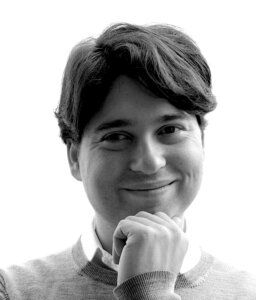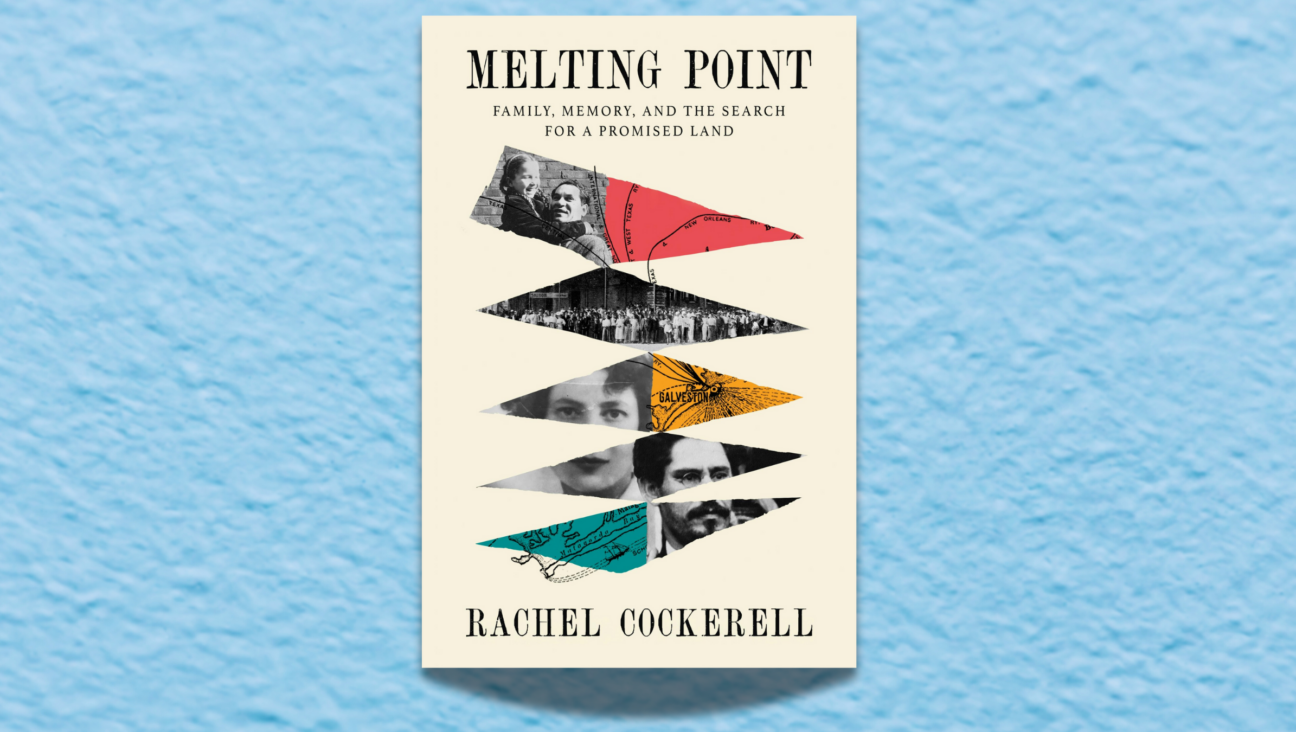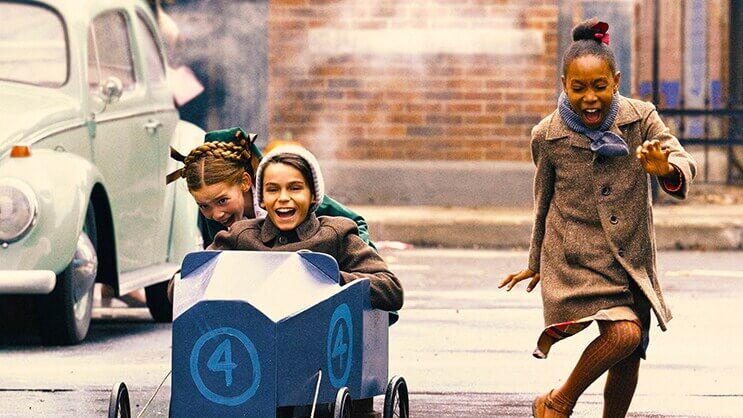Excuse Me, Have You Seen My Alps?

Pine Fresh: Alpine cabins provide innovative display contexts for Jewish and Germanic histories. Image by THE JUDISCHES MUSEUM HOHENEMS

Before embarking on a trip to Switzerland in the 1880s, the great rabbi Shimshon Raphael Hirsch is reported to have said, “When I shall stand before God, the Eternal One will ask me with pride: Did you see my Alps?”
This apocryphal quote is the jumping-off point for a new exhibit at the Jewish Museum in Hohenems that explores the Jewish love of the Alps.
Hohenems sits at the foot of the mountains in Vorarlberg, Austria. Nearby Lake Constance attracts summertime visitors to the internationally renowned Bregenz Festival.

That Peak Over There, hashem Was Especially Proud Of: Jews, and not just the ultra-Orthodox, have been regular visi-tors to the Alps for centuries. Image by HANNO LOEWY
Hohenems is a toy-sized town surrounded by towering cliffs and distant peaks. Whenever you look up, nature reminds you both of its grandeur and savagery. You can walk the town center in an hour, see the old town square and renaissance palace or the winding streets of the old Judengasse.
It is here, in a stately 19th-century villa once owned by Jewish textile magnates, that a Jewish museum opened in 1991. The permanent exhibit details the small yet prosperous Jewish community that thrived here for 300 years. Nowadays, the only Jewish resident is Hanno Loewy, the museum’s director. But his institution — the only Jewish museum in the region — attracts Jews from Innsbruck, Zurich and Geneva.
The morning of my visit, the museum opened early to give tours to energetic yet curious elementary school children, with whom I nearly collide on my way to Loewy’s office.
The idea for the exhibit came to Loewy in the Swiss Alps. While vacationing, he encountered Orthodox Jews. “It was fascinating to see how devoted they were to this landscape and to this experience,” he said, in reference to the large Orthodox leisure culture in the Swiss Grisons. In fact, kosher resorts in places like Davos attract religious Jews from all over the world.
Getting from this kernel of an idea to an exhibition took nearly four years. The first step was to talk to people. “The reaction was very much the same with a lot of people — both Jews and non-Jews. The first was always, “Jews and the Alps? What do you mean? Jews and pirates? Is that a subject?” he recalled. “Jews are people of the coffeehouse, and they definitely are no mountaineers. Jews are luftmenschen, that’s the basic idea!”
After this initial resistance, people opened up and passionately shared their stories. “In a way, what we learned is that to be a real luftmensch means to be a very physical person, because the real luft is on the top of a mountain. That’s the place where heaven and earth meet. You need a lot of physical power to really meet the spirit,” he explained.
Loewy’s first idea to organize the exhibit topographically proved impractical both for design and for content. “Our idea was to create mountains and to walk through a kind of landscape,” Loewy said. The exhibit is now arranged thematically and fits into various pine structures. For instance, the portion that deals with leisure culture in the early 20th century is modeled after a hotel balcony. You duck through a tunnel to learn about stories of flight and escape. On the outer walls of a cabin that visitors cannot enter, you find the history of Aryanization. Finally, contemporary Jewish tourism is displayed inside a sukkah, whose rooflessness represents the connection between earth and heaven.

Pine Fresh: Alpine cabins provide innovative display contexts for Jewish and Germanic histories. Image by THE JUDISCHES MUSEUM HOHENEMS
After Loewy and his colleagues had amassed mountains (no pun intended) of information, they whittled down their selection by seeing what “catchy objects” they could get their hands on.
Luckily, they were able to track down a great many, including the Opel bicycle that Theodore Herzl rode around the Aussee region, where his family vacationed in the 1890s and 1900s. Another easily accessible vacation spot for Viennese society was Semmering, a pass where intellectuals and artists like Arthur Schnitzler and Gustav Mahler would go to experience nature in a comfortable bourgeois environment.
On display are the walking stick and flask belonging to Sigmund Freud, who liked to spend his summers on the Semmering in the company of Schnitzler, Mahler, and Arnold Schoenberg. Siegfried Kracauer and Theodor Adorno preferred hiking in the Dolomites.
Psychiatrist Viktor Frankl, an avid climber, used to cite the Alps as a reason he found to keep living during the Holocaust: “Mountain climbing, the memory of how the rock feels, this was one of the reasons to survive the concentration camp horrors.” His mountain hat and rope are on display.
Beyond showcasing objects such as these, the exhibit details Jewish contributions to tourism, winter sports, medicine, climbing and ethnography — often in the pursuit of advancing German culture.
Take, for instance, Paul Preuss, the spiritual father of free climbing, who completed 1,200 ascensions (including 300 solo and 150 first ascents) before plunging to his death at the age of 27. Or perhaps Eugenie Goldstern, an ethnographer whose investigations into alpine folklore and everyday objects was invaluable to the Austrian Museum of Folk Life and Folk Art.
Other Jews, such as Julius and Moritz Wallach, promoted Tracht, or German regional folk dress — Lederhosen for men and Dirndls for women. Their specialty store in Munich popularized the Bavarian costumes until the business was Aryanized (although that word seems especially absurd in this context) in 1939. Jewish physician Raphael Hausmann helped turn the Italian town of Merano into an internationally famous resort and spa destination by promoting the “the Merano Grape Cure.”
But the dark side of this history also looms forbiddingly. The Nazis considered the Alps a fortress. This led violinist and mountaineer Joseph Braunstein to lament in 1936 that the Alps had gone from being “Europe’s playground” to a “military training field.”
The Nazi fascination with the Alps had been nurtured by a string of highly successful films from the 1920s and ’30s, known as the Bergfilme (Mountain Films) that depicted in ways both thrilling and hokey man’s struggle against the relentless forces of nature. This genre gave Leni Riefenstahl her first experience as a director, collaborating with the communist Hungarian-Jewish writer and film theorist Béla Bálazs on the film “Das Blaue Licht.” In fact, many left-wing Jewish artists, including composer Paul Dessau and photographer Helmar Lerski (who also designed special effects for Fritz Lang’s “Metropolis”), were as captivated by these epic mountain adventure fairy tales as the films Nazi admirers. (“Das Blaue Licht” was one of Hitler’s favorite films).
The Alps ceased to be a place of leisure and inspiration and instead became a battleground for hateful ideology. Starting in the 1920s, Jews were banned from joining the Alpine Association. A caricature from 1922 shows a fat Jew with a hooked nose desecrating German culture by wearing Tracht. Antisemitic comments are scribbled in the margins of a 1921 register from the St. Moritz Palace Hotel. In 1938, Jewish-owned spas and hotels were Aryanized, and the property of Jewish guests confiscated.
As early as 1939, the Nazis even set up concentration camps in the Alps, many of them connected to Mauthausen. One such camp was at Ebensee in Aussee, where Herzl’s family used to spend their summers. There are stories of daring escapes — many unsuccessful — across the mountains into Switzerland. More escapes took place after the war, when Ebensee was converted into a displaced persons camp and 3,000 inmates crossed the 7,900-foot-high Krimmler Trauen Pass en route to Palestine.
After this weighty history, the exhibit takes a detour across the Atlantic, with a short display on the Catskill Mountains — or “Jewish Alps” — supplemented by paraphernalia from the Concord Hotel and Grossinger’s. It’s a suitably quirky note to land on, especially when viewed alongside the Orthodox vacationing that was Loewy’s starting point for the exhibit: saying in effect, you can take the Jews out of the Alps, but you can’t take the Alps out of the Jews!
But what exactly, after all this, is the Jewish relationship to the Alps? It is a question that the exhibit resists answering explicitly. Instead, Loewy hopes it provokes discussion about the Alps as one of mankind’s natural heritages, and not belonging to a single nation or people. He adds that the exhibit has attracted members of mountain clubs and Tracht aficionados — in other words, people who otherwise would not enter a Jewish museum.
In the end, Loewy returns to his Orthodox Jews vacationing in the Swiss Alps. “As Jews, we live in a polycentric world, with many important places. The top of an Alpine mountain can be an experience of Zion,” he said.
As I was about to go, Loewy told me about an Orthodox Web site he came across where a student posted a shayla *(query) about his rebbe’s teachings: “When *mashiach comes, will God move the Alps to Eretz Yisroel?”
Did You See My Alps? is at the Jewish Museum Hohenems from April 28 through October 4.
A.J. Goldmann is a writer based in Berlin. His articles on art and culture have appeared in various publications, including The Wall Street Journal, USA Today and The Christian Science Monitor.
The Forward is free to read, but it isn’t free to produce

I hope you appreciated this article. Before you go, I’d like to ask you to please support the Forward.
Now more than ever, American Jews need independent news they can trust, with reporting driven by truth, not ideology. We serve you, not any ideological agenda.
At a time when other newsrooms are closing or cutting back, the Forward has removed its paywall and invested additional resources to report on the ground from Israel and around the U.S. on the impact of the war, rising antisemitism and polarized discourse.
This is a great time to support independent Jewish journalism you rely on. Make a Passover gift today!
— Rachel Fishman Feddersen, Publisher and CEO
Most Popular
- 1

News Student protesters being deported are not ‘martyrs and heroes,’ says former antisemitism envoy
- 2

News Who is Alan Garber, the Jewish Harvard president who stood up to Trump over antisemitism?
- 3

Fast Forward Suspected arsonist intended to beat Gov. Josh Shapiro with a sledgehammer, investigators say
- 4

Politics Meet America’s potential first Jewish second family: Josh Shapiro, Lori, and their 4 kids
In Case You Missed It
-
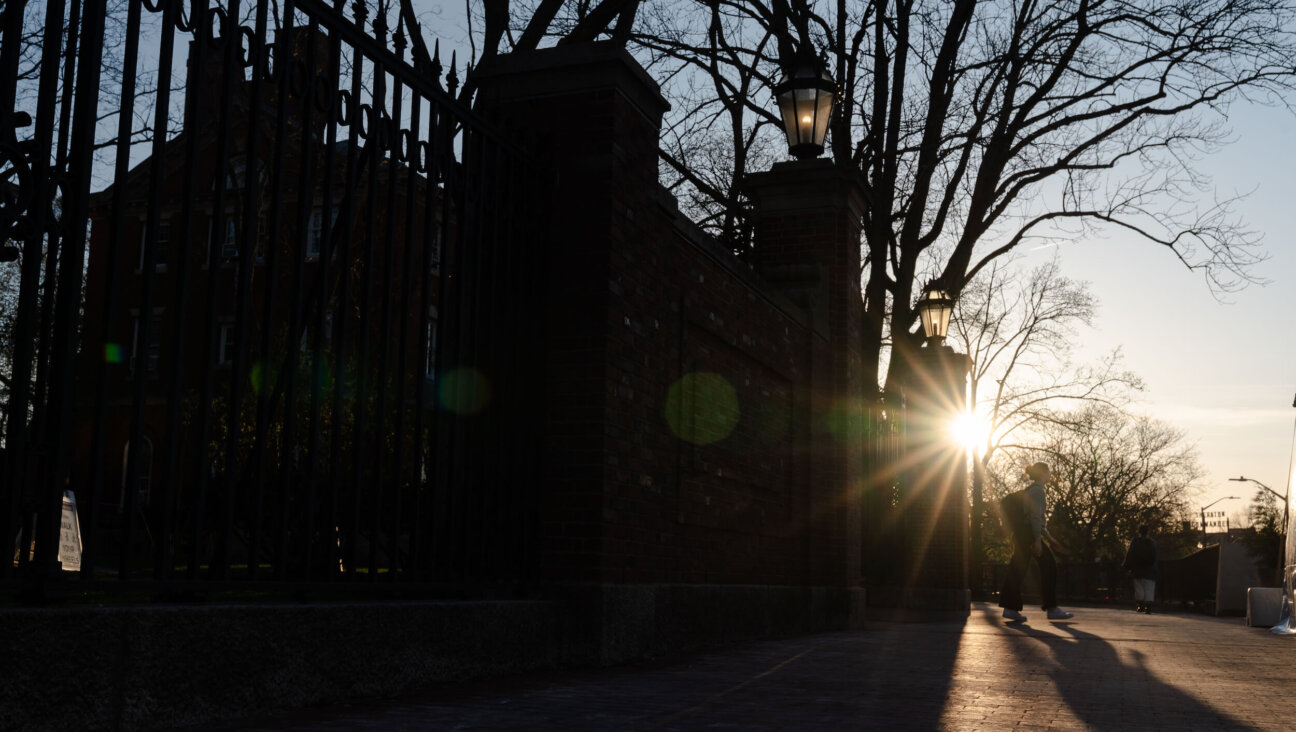
Opinion Why can Harvard stand up to Trump? Because it didn’t give in to pro-Palestinian student protests
-
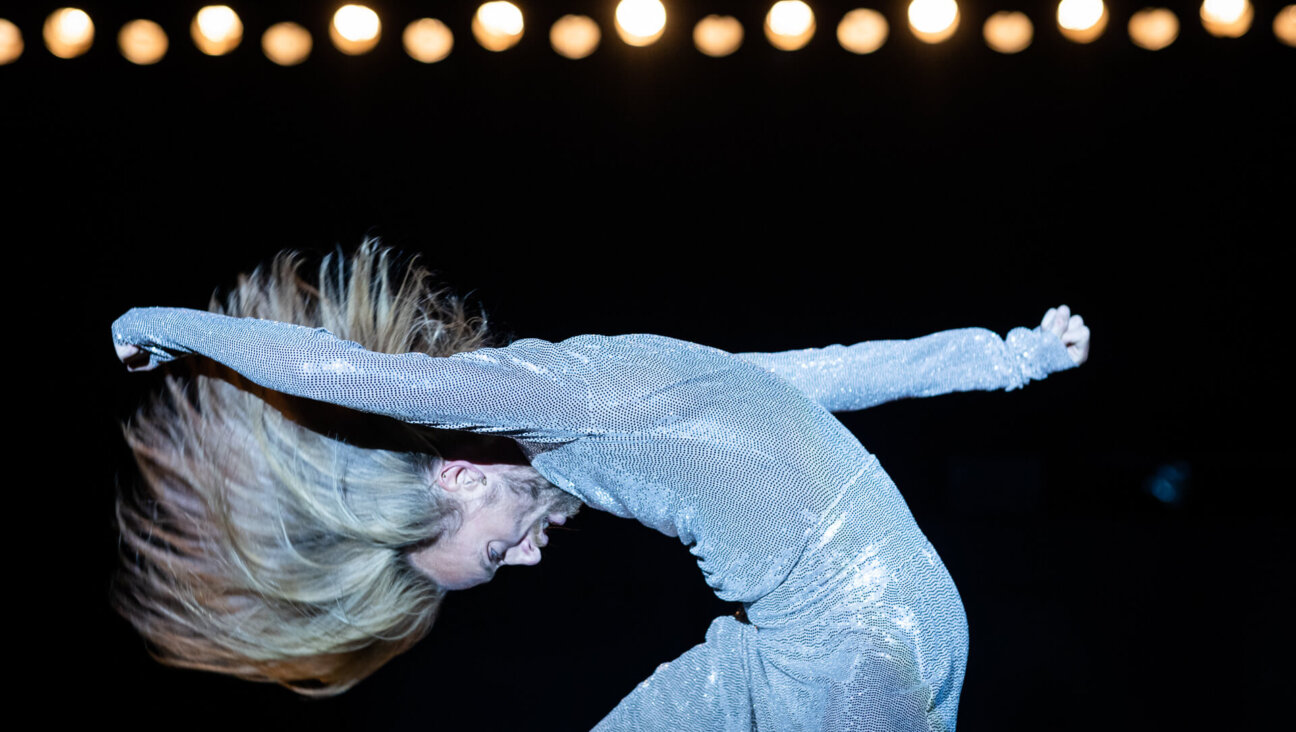
Culture How an Israeli dance company shaped a Catholic school boy’s life
-

Fast Forward Brooklyn event with Itamar Ben-Gvir cancelled days before Israeli far-right minister’s US trip
-
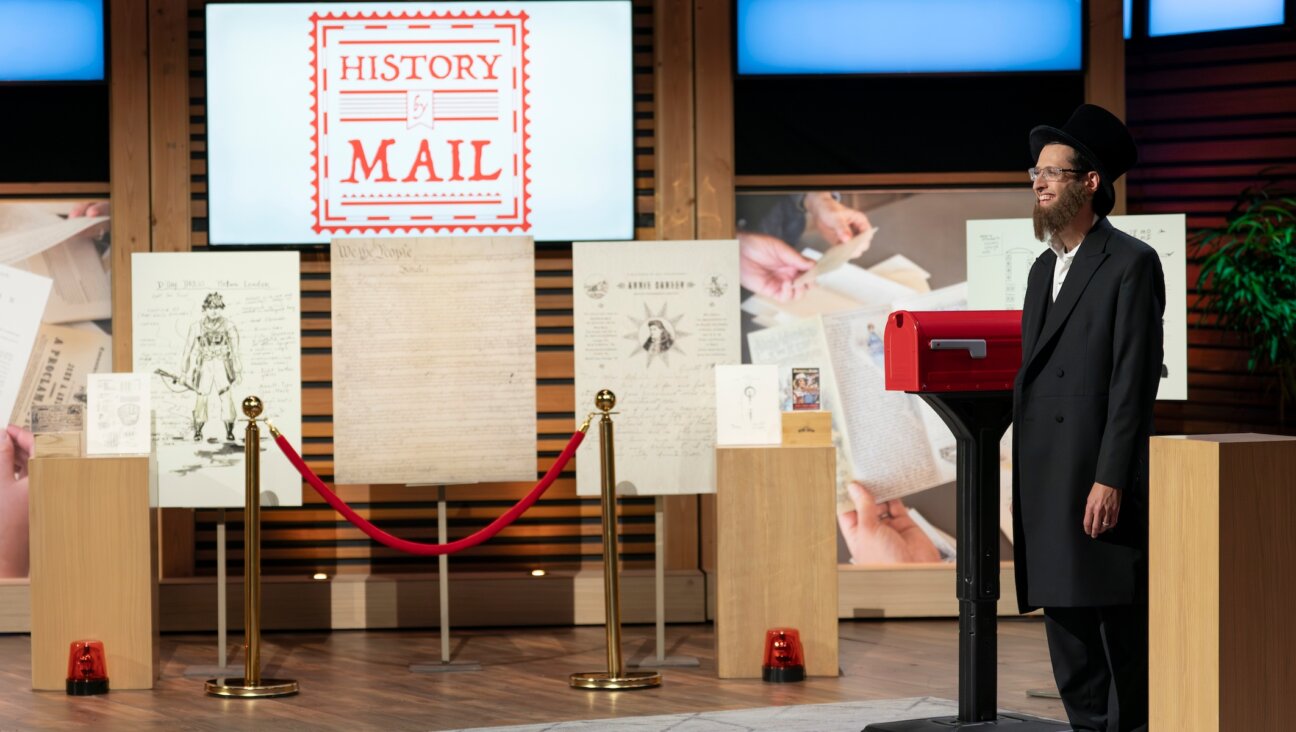
Culture How Abraham Lincoln in a kippah wound up making a $250,000 deal on ‘Shark Tank’
-
Shop the Forward Store
100% of profits support our journalism
Republish This Story
Please read before republishing
We’re happy to make this story available to republish for free, unless it originated with JTA, Haaretz or another publication (as indicated on the article) and as long as you follow our guidelines.
You must comply with the following:
- Credit the Forward
- Retain our pixel
- Preserve our canonical link in Google search
- Add a noindex tag in Google search
See our full guidelines for more information, and this guide for detail about canonical URLs.
To republish, copy the HTML by clicking on the yellow button to the right; it includes our tracking pixel, all paragraph styles and hyperlinks, the author byline and credit to the Forward. It does not include images; to avoid copyright violations, you must add them manually, following our guidelines. Please email us at [email protected], subject line “republish,” with any questions or to let us know what stories you’re picking up.



